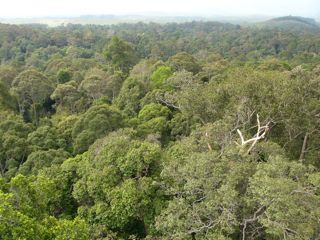Background

Recent evidence of global warming has raised awareness of the importance of mitigation practices to reduce or avoid the threats of climate change. Curbing deforestation is a highly cost-effective way of reducing greenhouse gas emissions (Stern 2007, IPCC 2007). However, our knowledge of forest carbon dynamics and the impact of climate change is still insufficient.
Long-term monitoring of forest dynamics can help us to estimate changes in forest carbon stocks more accurately. Networking of monitoring plots provides opportunities for global comparisons and the synthesis of research that could not be accomplished with individual plots (Losos and Leigh 2004). In 2009, Japan’s Forestry and Forest Products Research Institute (FFPRI) established a new network of forest dynamics plots, the East Asia Forest Dynamics Plots Network (EA-FDPN), with funding from the Japanese Ministry of the Environment.
A New Network for Broad-Range of East Asia
In last few decades, FFPRI has set up large-scale and long-term research plots for monitoring forest dynamics in Japan and East Asia in collaboration with many foreign research institutes and universities.
Our plot network, EA-FDPN, is unique in that it covers various climate types from Siberia to equatorial area throughout East Asia. There are four forest types in this network: Boreal forests (Tura); Tropical dry forest (Mae Klong); Tropical rain forests (Semangkok, Pasoh & Bukit Soeharto); and Tropical swamp forests (Lam Se Buy & Ranong).
Because FFPRI already has a network and database of long-term monitoring plots under temperate forest ecosystems in Japan, the EA-FDPN currently excludes temperate deciduous and evergreen broad-leaved forests. For more detail of FFPRI’s temperate forest network, please visit the following web site: FFDB (Forest Dynamics Data Base).
Aims of This Project
The aims of this project are as follows
- Long-term monitoring data of forest dynamics can help us to accurately estimate changes in forest carbon stock
- Networking of plots provides opportunities for global comparisons and the synthesis of research that could not be accomplished through any individual plot.
- Establish forest plots network composed various forest types such as natural forests and manage forest in East Asia.